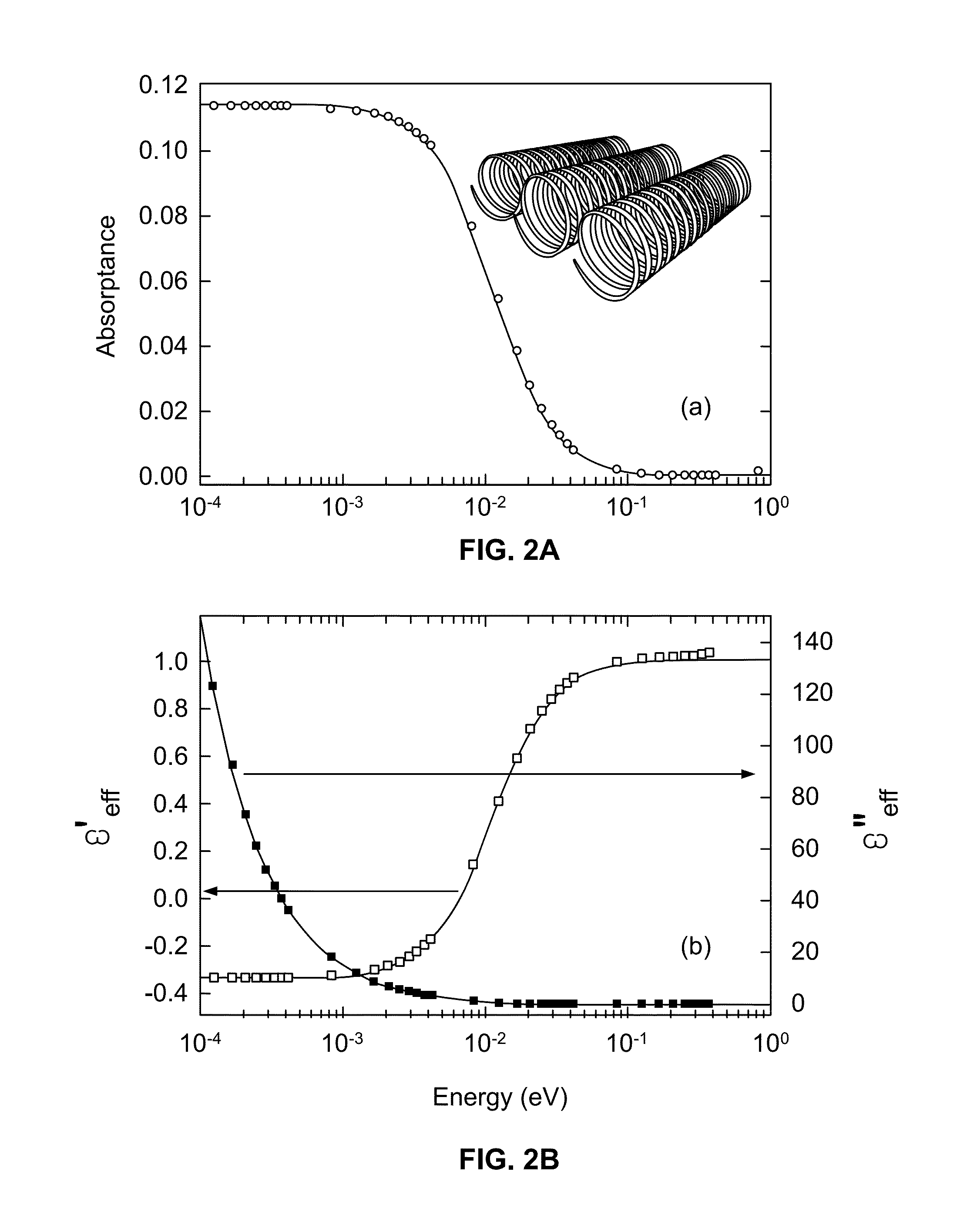Supressing optical loss in nanostructured metals by increasing self-inductance and electron path length
a nano-structured metal and optical loss technology, applied in the direction of basic electric elements, electrical equipment, semiconductor devices, etc., can solve the problems of reducing the efficiency of semiconductor manufacturing, difficult to avoid, and affecting the efficiency of manufacturing, so as to achieve the effect of increasing the fraction of absorption in a semiconductor, increasing the self-inductance of the structure, and reducing the loss
- Summary
- Abstract
- Description
- Claims
- Application Information
AI Technical Summary
Benefits of technology
Problems solved by technology
Method used
Image
Examples
Embodiment Construction
[0033]This description is not to be taken in a limiting sense, but is made merely for the purpose of illustrating the general principles of the invention. The scope of the invention is defined by the appended claims.
[0034]In one preferred embodiment, the present invention provides an optoelectronic device that decreases absorption in metal nanostructures over a broad band. The invention utilizes the control of self-inductance to hinder the change in the movement of free electrons in metals to increase effective electron mass. For the monolayer array of metal coils 100 shown in FIG. 1, the wire has a rectangular cross section and is helically wound with an outer radius R and a pitch p. These two are related by
p=2πR tan θ, (1)
[0035]where π / 2−θ is the angle between the wire and the coil axis (z-axis) and θ is assumed to be small so that tan2θ<<1.
[0036]As shown in FIG. 1, the coils form a periodic monolayer array 100 with the distance between the neighboring coil axes equal to α and li...
PUM
 Login to View More
Login to View More Abstract
Description
Claims
Application Information
 Login to View More
Login to View More - R&D
- Intellectual Property
- Life Sciences
- Materials
- Tech Scout
- Unparalleled Data Quality
- Higher Quality Content
- 60% Fewer Hallucinations
Browse by: Latest US Patents, China's latest patents, Technical Efficacy Thesaurus, Application Domain, Technology Topic, Popular Technical Reports.
© 2025 PatSnap. All rights reserved.Legal|Privacy policy|Modern Slavery Act Transparency Statement|Sitemap|About US| Contact US: help@patsnap.com



